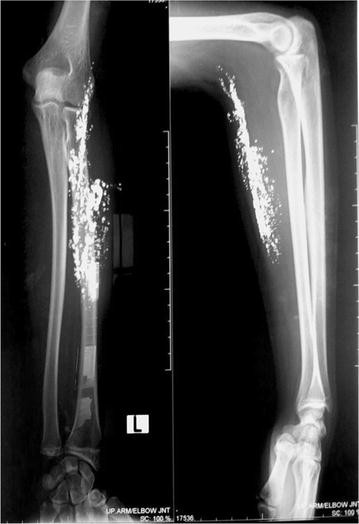A 21-year-old dental assistant attempted suicide by injecting 10 ml (135 g) of elemental mercury (quicksilver) intravenously. She presented to the
emergency room with tachypnea, a dry cough, and bloody sputum. While breathing room air, she had a partial pressure of oxygen of 86 mm Hg. A chest
radiograph showed that the mercury was distributed in the lungs in a vascular pattern that was more pronounced at the bases. The patient was
discharged after one week, with improvement in her pulmonary symptoms. Oral chelation therapy with dimercaprol was given for nine months, until the
patient stopped the treatment; the urinary mercury level did not change during this period. At follow-up at 10 months, she was healthy, with none of
the renal, gastrointestinal, or neurologic effects that can result from the oxidation of mercury in the blood and consequent exposure of these organ
systems. The abnormalities on the chest radiograph were still apparent. Although these abnormalities are striking, the absence of clinical toxicity in
this patient illustrates the differences in the acute and chronic effects of exposure to elemental mercury, inorganic mercury (e.g., mercuric
chloride), and organic mercury (e.g., dimethylmercury). Inorganic and organic mercury are much more toxic than elemental mercury; for example, a dose
of 400 mg of mercury in the form of dimethylmercury is usually lethal.
|



 (the good doctor voice)
(the good doctor voice)  that's why we should always expect the worst and use water heavy metals
test strips before we extract metals and potassium rhodizonate for lead etc
that's why we should always expect the worst and use water heavy metals
test strips before we extract metals and potassium rhodizonate for lead etc










